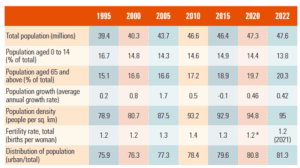Healthcare Costs, HSAs, Mandates Lead Insurance Committee Agenda – CBIA

The legislature’s Insurance and Real Estate Committee raised and heard more than 40 bills this session, approving a number of measures impacting small business healthcare costs.
Two of Gov. Ned Lamont’s legislative proposals to expand access to employer-sponsored wellness programs and monitor statewide healthcare expenditures were unanimously approved by committee members a few weeks ago. CBIA supported both bills at the public hearing.
HB 5042 codifies Executive Order No. 5, which tasked the Office of Health Strategy to monitor healthcare spending growth across all public and private payers and populations in Connecticut, develop annual cost growth benchmarks, conduct data analysis to identify factors driving cost growth, and hold providers and payers accountable through public hearings when the benchmarks are exceeded.
The data collected by the benchmarking initiative will help develop policies to target key cost growth drivers.
The bill also codifies the executive order’s requirement that benchmarks account for current primary care spending and set a target of 10% for primary care spending as a percentage of total healthcare expenditures by 2025.
Benchmarking
Over the last two years, OHS has undergone significant stakeholder engagement by holding over 60 public meetings and has retained the Peterson-Milbank Program for Sustainable Healthcare Costs to consult on the establishment of the benchmarking program.
Under the bill, Connecticut will join several other states—including Massachusetts, Delaware, Washington, and Oregon—by adopting statutory provisions governing its healthcare cost growth program.
Connecticut will join several other states by adopting statutory provisions governing its healthcare cost growth program.
Massachusetts, the first state in the country to implement such a program, reported that annual growth in total healthcare expenditures fell below the benchmark of 3.6% for the three years between 2013 and 2016 and yielded a five-year annual average of 3.4%.
The Commonwealth Fund reported that during those years, employers and consumers paid an estimated $7.2 billion less than they would have if the state’s spending growth had matched the national average.
Wellness Programs
SB 15 also passed unanimously out of the committee. The bill requires health insurance carriers to offer small employers not less than two wellness programs.
While this bill is a mandate for employers and result in a small cost to implement, CBIA is supportive because of the potential return on investment for struggling small employers.
According to a recent RAND report, wellness programs reduced average monthly healthcare costs by about $30 per member.
According to a recent RAND report, wellness programs reduced average healthcare costs by about $30 per member per month with disease management programs responsible for the bulk of those savings.
Wellness programs, if tailored appropriately with optimal employee buy-in, can also positively impact employee behavior and result in a more productive, happier workforce.
High Deductible Health Plans
SB 357 passed unanimously out of the committee and addresses a problem that arose with the copay accumulator bill from last year.
CBIA supported this bill due to the potential negative tax implications for the thousands of employers offering HSA-qualified HDHPs.
CBIA supported this bill due to the negative tax implications for thousands of employers.
Public Act No. 21-14 from last year required every individual and group health insurance policy in the state to credit third-party discounts toward an individual or family’s coinsurance, copayment, deductible or other out-of-pocket limits.
The public act did not exempt HSA-qualified high deductible health plans from these requirements.
IRS Guidance
Shortly after the bill was signed into law last year, the IRS and Department of Health and Human Services issued guidance that stated HSA-compliant HDHPs were not permitted to have medical expenses paid for by a third party until the associated deductible and out-of-pocket limits are met.
In other words, the application of drug coupon cards toward an individual or family’s deductible or out-of-pocket limit violates the federal tax code and would disqualify tens of thousands of Connecticut employees and employers from utilizing tax advantaged HSAs.
Many states that adopted identical language to Connecticut have already begun legislative and regulatory fixes.
Many states that adopted identical language to Connecticut’s copay accumulator bill have already begun legislative and regulatory procedures to fix this problem.
In Oklahoma, the insurance commissioner issued a bulletin that the department is “actively engaging with the legislature to seek clarification regarding the conflict between state statute and federal requirements governing HSA eligibility.”
In Kentucky, the Insurance Department issued guidance that the provisions of the copay accumulator bill only applies to the extent permitted by federal law and noted that the rules did not apply to HDHPs when paired with an HSA.
Cap Deductible Bill Fails
HB 5410 failed to make it out of committee after CBIA and a number of industries testified in opposition. The bill capped the annual deductible for HDHPs at the federal minimum ($1,400 for an individual and $2,800 for a family).
According to a recent report published by the Kaiser Family Foundation, the vast majority of small firms that offer HSA-qualified HDHPs have annual deductibles for individuals greater than $1,400 and for families greater than $2,800.
Self-funded plans (i.e. those of which the employer maintains capital reserve from which the medical claims are paid) are regulated by the federal government under ERISA.
The proposal to cap deductibles would inevitably lead to drastic changes in plan designs.
HB 5410 applied strictly to fully-insured HDHPs which represent a smaller segment of the market primarily utilized by small and mid-size companies.
The proposal to cap deductibles in this market would inevitably lead to drastic changes in plan designs, including premium increases, out-of-pocket maximum increases, and/or dropping of the HDHP plan.
AccessHealthCT, the state’s health insurance exchange, also submitted testimony in opposition warning lawmakers that if the bill went into effect, all of the Bronze HSA plans utilized by nearly 12,000 consumers and 600 members in the small group market would be eliminated.
New Benefit Mandates
The committee also approved three bills imposing new benefit mandates on small employers:
HB 5386: Establishes a cap of $25 for policyholders who need to acquire an ECI through their insurance plan.SB 377: Extends the time period within which an insured shall: (1) provide notice of the birth of a newborn, and (2) pay any required premium or subscription fee to continue the newborn’s coverage beyond that period.SB 358: Expands health insurance requirements for treatments used to diagnose breast cancer
CBIA opposed all three mandates due to the resulting increased cost of health insurance premiums.
Connecticut residents pay an additional $2,085 in premium costs because of the state’s 68 health benefit mandates.
Each year, Connecticut residents pay an additional $2,085.48 in premium costs because of the 68 health benefit mandates codified in state law.
These increases are detrimental to small employers who are not required to offer health insurance under the Affordable Care Act, but choose to do so.
This is why CBIA, year after year, urges the Insurance Committee to utilize the Health Benefit Review Program, allowing the Connecticut Insurance Department to conduct a cost-benefit analysis of any mandates at the request of the legislature.
This review includes the portion of the population that would utilize the benefit, the extent to which the benefit is currently available, the extent to which coverage is already available, the level of public demand for the benefit, the impact the benefit would have on the availability of other benefits, the cost to carriers and employers, as well as the overall social implications of the mandate.
For more information, contact CBIA’s Wyatt Bosworth (860.244.1155) | @WyattBosworthCT



